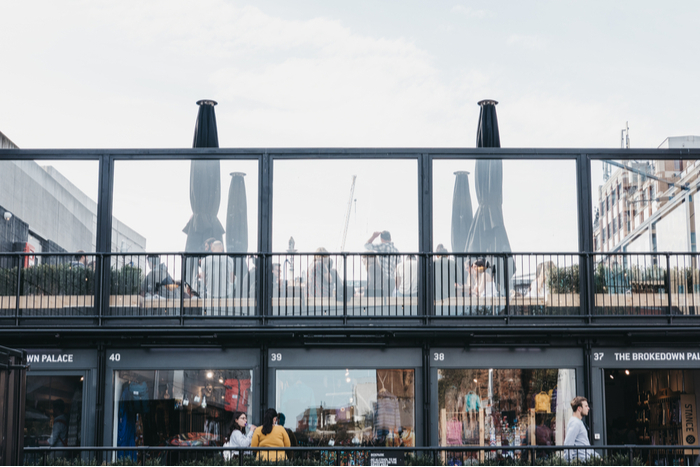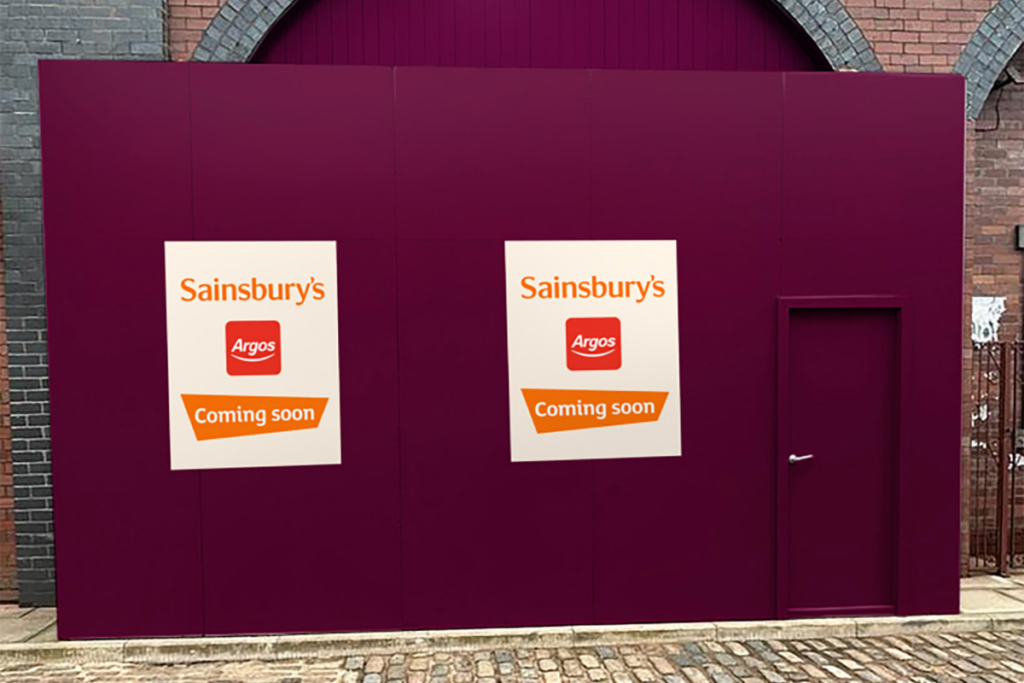Pop-ups are no longer just a retail trend. From upcoming brands and small businesses to established luxury retailers and tech giants such as Amazon, it seems no area of retail has been left untapped in the pop-up world.
The UK’s pop-up industry was worth over £2.3 billion a year. At least that’s what Ana Milevskaja, director of marketing agency Elastic Path, told Business Leader in February last year – long before the coronavirus pandemic struck.
Yet in today’s tough trading climate, it’s arguable thay retailers will seek to tap in to the multi billion-pound pop-up market as a way to mitigate soaring rents and a slow recovery in footfall as lockdown measures ease.
Pop-ups are usually open for a short period of time – from as little as one day to several months. Primark’s first ever and very brief pop-up at Boxpark Shoreditch before the pandemic, and Harrods’ brand new concept outlet store at Westfield London to be open for at least five months, are prime examples of this.
Either way, the concept of pop-ups often capitalises on consumers’ fear-of-missing-out (FOMO) mentality. Today’s audience is constantly the next best thing, and pop-ups are a way for retailers to talk about and share their business with others at a time when experiences are a far greater currency than simple in-store transactions.
However, in the age of Covid-19, pop-ups along with swathes of high streets and shopping centres had to temporarily shut in the UK due to a government-mandated lockdown of non-essential retail.
Despite this, Big 4 leader Tesco took the opportunity to launch a pop-up supermarket in the Nightingale Hospital in April to help NHS frontline staff easily purchase essentials at a time when the UK’s Covid-19 death rates were at its peak. Convenience chain Costcutter also installed 20 pop-up stores in NHS hospitals during the same month to serve doctors and nurses who were unable to travel to stores.
“Pop-ups are the place for retailers to make mistakes, learn, evolve & test”
As more and more shoppers avoided travelling into stores, retailers had to find other ways to drive sales. Undoubtedly, online sales surged during lockdown with multiple retailers recording rocketing sales.
Ted Baker subsequently developed its first-ever digital pop-up shop which launched in May to help local communities during the pandemic and beyond, offering customers an ongoing collection of limited-edition pieces.
Alexis Eyre, director at marketing agency Five by Five, said pop-ups allowed established brands to “test out” new market areas before committing to setting up a full-scale operation if they’re looking to expand.
In fact, Primark said at the time of its Boxpark pop-up that its main purpose was to introduce a new Wellness collection – which featured over 75 sustainably-made products across womenswear, menswear, homeware and skincare.
Assel Yusupova, business development manager at design agency UXUS, said pop-ups have become more than a temporary retail space, but a “testing platform” for retailers to experiment.
“There is a lot of talk at the moment about the need to re-invent retail”
The continued success of the Boxpark in general, for example, could illustrate the room for growth retailers have in the pop-up world. Last month, the retail property firm – known for housing independent and pop-up retailers in refurbished shipping containers – announced its ambitious expansion plans thanks to ongoing success.
Meredith O’Shaughnessy, brand strategist at Meredith Collective, agreed with Yusupova. She added that “pop-ups are the place for retailers to make mistakes, learn, evolve and test”.
“It enables brands to inject a startup mentality into a retail experience, without budget-crushing investment,” she said.
“In addition, retailers that invest in pop-ups could simplify their access to connect with a wider customer base.”
Amazon, arguably one of the biggest retailers in the world, launched 10 pop-up shops in UK town centres last summer. The Clicks and Mortar initiative allowed 100 small online businesses the opportunity to trade in a physical retail setting.
Amazon said UK shoppers liked to shop both online and in high street stores, and Clicks and Mortar’s purpose was to help small businesses succeed by combining elements of online and physical retail.

“There is a lot of talk at the moment about the need to re-invent retail,” said Stuart Higgins, partner at tech consultancy firm BearingPoint.
“Bricks-and-mortar retailers are trying to inject more theatre and excitement into their traditional high street stores and online retailers are starting to open bricks-and-mortar stores to better showcase merchandise and increase consumer brand loyalty.”
Higgins added that retailers should consider investing in pop-up stores to “deliver more sales during peak seasons, and build excitement and awareness without the burden of long leases and high business rates”.
James Bowthorpe, retail curator for Lower Stable Street, a street for pop-ups, live events and experiential stores launched in October 2018 at London’s Coal Drops Yard, re-iterated that pop-ups were a great way for retailers to “test the water”.
“We’ve had a couple of pop-ups that have returned and evolved into long term tenants in larger units,” he told Retail Gazette.
A prime example of this is Huda Beauty, which launched its first ever pop-up in London last year. Reportedly worth more than $1.2 billion (£920 million), Huda Beauty is one of the fastest growing beauty brands in the world and founder Huda Kattan has 42 million Instagram followers. Thanks to the pop-up success, Boots launched Huda Beauty in its stores and online earlier this year, along with Fenty Beauty.
Bowthorpe argued that in order for retailers to find success in pop-ups, good planning with a specific audience in mind was key.
“You can’t just open the doors and expect people to turn up,” he said.
“The more events, workshops, talks and experiences you can offer your audience the better.”
“Pop-ups inject a startup mentality into a retail experience”
Due to the increased popularity of pop-ups though, retailers may risk becoming a victim of their own success. As consumers want new ideas constantly, pop-ups must also be constantly fresh – which may difficult to deliver, especially for start-up brands.
Moreover, in cities like London, rent can be extortionately high, with well-established companies happy to pay as much for a pop-up space as they would for a permanent shop.
O’Shaughnessy said the downside of a pop-up investment was that retailers usually make the mistake of “focusing too much on sell, sell, sell at the beginning when actually they need to focus on brand awareness, loyalty and innovation and the sales will then follow”.
Eyre added that retailers often underestimate the costs behind pop-ups.
“As a result, the activation ends up being half-hearted, or the target audience just hasn’t been gauged correctly,” he said.
Undoubtedly, many retailers are already spending vast amounts of cash on digital advertising, and a physical store could fare well for consumers who are already spending money online.
While pop-ups could be a sustainable solution to the problems retailers continue to face on the high street, especially in a post-lockdown environment as retailers battle landlords for more flexible leases, the phenomenon risks fizzling out due to the unexpected costs associated with sustaining them.
Yet as non-essential stores continue to reopen nationwide, the rise in store vacancies from all the administrations announced since the pandemic started could lead to a wave of pop-ups. Only time will tell.
Click here to sign up to Retail Gazette‘s free daily email newsletter

















